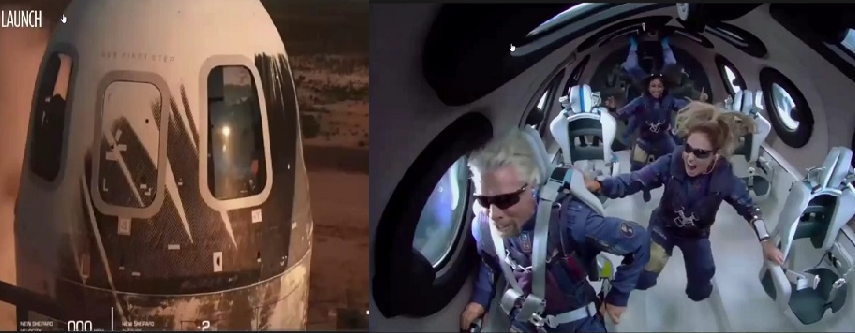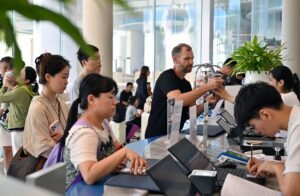India discussion on ‘Space Tourism: The Next Frontier’

Travel Biz News —
Space Tourism has been in news recently because of two American billionaires, Richard Bronsan and Jef Bezos who went into space as tourists using their personal rocket and aircraft .
The Nehru Science Centre, Mumbai in association with the Aeronautical Society of India, Mumbai Branch organised an online lecture on ‘Space Tourism: The Next Frontier’ recently.
Dr. Punita Masrani, Aerospace Medicine Specialist, V. M. Medical Centre, Mumbai discussed various aspects of the commercial space travel in the lecture.
The concept of Space tourism or commercial space travel is not new and its history right from the idea conception to reality was discussed by Dr Punita in the online lecture. ‘Space tourism is the space travel for recreational, leisure of business purposes.
Dr. Punita said that earlier NASA and the Russian Space Agency started taking tourists for space travel. It was exorbitant and process was stringent. Russian Soyuz spacecraft used to take tourists every 6 months.
‘Space Adventures was the first agency in the field of Space Tourism. The agency was started by US billionaire Richard Garriot in 1998. The agency offered brokered rides aboard the Russian Soyuz Rockets’ Dr. Punita informed.
Dr. Punita said, while, both NASA and the Russian Space Agency halted space tourism, industrialists and entrepreneurs thought they could start private missions so that more and more people could travel to space. This gave birth to the concept of Space tourism.
In her lecture, Dr Punita said Dennis Tito was the first commercial spaceflight passenger before which only astronauts went to the space for research purposes. Tito went to space on the Russian Soyuz TMA Launch Vehicle in April 2001.
Mark Shuttleworth, Greg Olsen, Anoush Ansari, Charles Simony, Richard Garriott, Guy Laliberte were others who went on paid trips to space between 2002 to 2009. The private space travelers had to go through stringent selection standards, extensive training, and adopted measures of counteract challenges.
Dr. Punita also discussed in detail the various companies that are working in the field of private space travel.
Blue Origin was established in 2000 by Amazon CEO Jeff Bezos. Blue Origin’s reusable rocket New Shepard successfully completed first human flight recently with four private citizens onboard. The crew included Jeff Bezos, Mark Bezos, Wally Funk and Oliver Daemen. The rocket New Shephard took off on 20th July 2021 from West Texas, United States.
SpaceX is an American aerospace manufacturer, founded in 2002 by Elon Musk of Tesla Motors. The company has developed the Dragon Spacecraft which was used by NASA astronauts to go the International Space Station. Space X is planning to send citizens to the International Space Station on a 10-day paid trip. Space X is also planning trips to the moon and Mars.
Virgin Galactic was established in 2004 by the British entrepreneur Richard Branson. Richard Branson and his crew recently reached more than 50 miles above the New Mexico desert aboard his Virgin Galactic rocket plane and safely returned to earth.
Dr. Punita informed that while all these missions just offer a ride to the space, the NASA recently has allowed to take private citizens to the International Space Station for a short visit.
Companies like Axiom Space are involved in the training of private astronauts. The company is also planning Private Space station in future.
She explained the basic terminologies involved in space tourism like orbital flights, sub orbital flights, low earth orbits. According to the Fédération Aéronautique Internationale an altitude above 100km above sea level i.e., Kármán Line is space. The same agency considers an altitude of 50 miles (80.47km) as the altitude to qualify as spaceflight.
Dr. Punita informed that the International Space Station is a modular space station in low Earth orbit (Thermosphere). The station was established in 1998. It is a multinational collaborative project involving five participating space agencies: NASA (United States), Roscosmos (Russia), JAXA (Japan), ESA (Europe), and CSA (Canada).
She discussed the science involved and risk, awareness, concerns, and medical informed consent which are essential part of the tourism.
She further explained what could be possible post flight medical problems or conditions and impact of space travel on human body and brain. – Inputs from PIB India
July 31, 2021
Photo : PIB India














